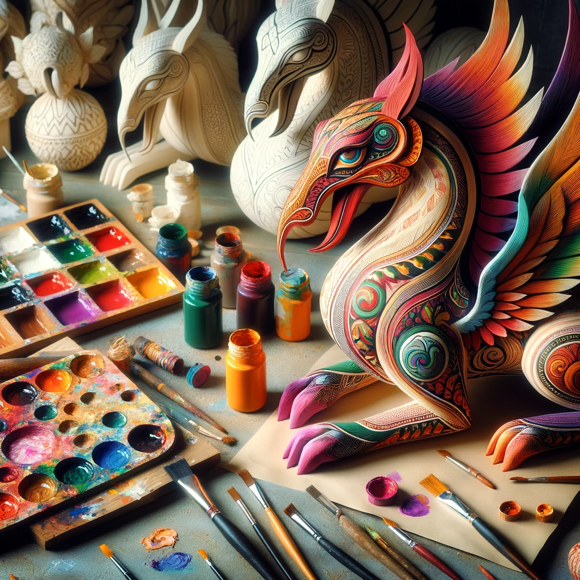Paper mache, a versatile and accessible medium, has been employed in artistic expression for centuries. Its pliability and affordability make it an attractive choice for sculptors seeking to create intricate and expressive forms. While the structural aspects of paper mache are well understood, the role of color in enhancing its aesthetic appeal is equally significant. In this article, we delve into the importance of color in paper mache sculpture, exploring various painting techniques and finishing methods that elevate the final artwork.
Understanding the Significance of Color
Color serves as a powerful tool in visual communication, evoking emotions, setting moods, and conveying meaning. In paper mache sculpture, color plays a pivotal role in bringing the artwork to life, transforming simple forms into captivating pieces of art. Whether subtle or vibrant, color enhances the texture, depth, and overall impact of the sculpture, engaging the viewer on multiple sensory levels.
Painting Techniques
Achieving the desired color effects in paper mache sculpture requires careful consideration of painting techniques. Various methods can be employed to apply color to the surface, each yielding distinct results:
- Base Coating: Before applying intricate details, a base coat of paint is often applied to the entire surface of the sculpture. This helps to create a uniform background and provides a foundation for subsequent layers of color.
- Layering: Layering involves applying multiple coats of paint to build up depth and dimensionality. By gradually adding layers of color, artists can create rich and nuanced hues, enhancing the realism or stylization of the sculpture.
- Dry Brushing: Dry brushing is a technique commonly used to highlight raised areas and textures. By lightly brushing a small amount of paint over the surface with a dry brush, artists can accentuate details and create subtle gradations of color.
- Wet-on-Wet: This technique involves applying wet paint onto a wet surface, allowing the colors to blend and merge seamlessly. Wet-on-wet painting can produce soft transitions between colors, ideal for creating naturalistic effects such as gradients and washes.
- Splattering and Spraying: Splattering or spraying paint onto the surface can add dynamic texture and spontaneity to the sculpture. This technique is particularly effective for creating speckled or mottled patterns, simulating natural phenomena like stone or aged surfaces.
Finishing Touches
Once the painting process is complete, applying a finish is essential to protect the surface and enhance its appearance. Several finishing options are available, each offering unique benefits:
- Varnish: Varnish provides a protective coating that seals the surface of the sculpture, guarding against dust, moisture, and fading. It also adds a subtle sheen, enhancing the colors and lending a professional finish to the artwork.
- Matte Medium: Matte medium can be applied to reduce the glossiness of paint and varnish, giving the sculpture a more subdued, satin-like finish. This is particularly suitable for artworks where a matte appearance is desired.
- Gloss Medium: Conversely, gloss medium can be used to intensify the shine and vibrancy of colors, creating a glossy, reflective surface. This finish can enhance the depth and luminosity of the sculpture, making it visually striking.
- Antiquing: Antiquing involves applying a thin layer of darker paint or glaze over the surface and then wiping it away, leaving traces of color in the recessed areas. This technique adds depth and character to the sculpture, accentuating its contours and details.
Conclusion
In paper mache sculpture, color serves as a vital element in the creative process, imbuing the artwork with personality, emotion, and narrative. By employing various painting techniques and finishing methods, artists can harness the power of color to elevate their sculptures to new heights of expression and beauty. Whether striving for realism, abstraction, or fantasy, the thoughtful application of color transforms humble materials into works of art that captivate and inspire.
